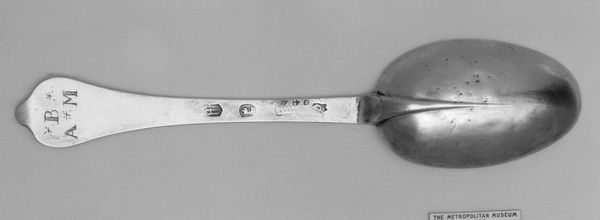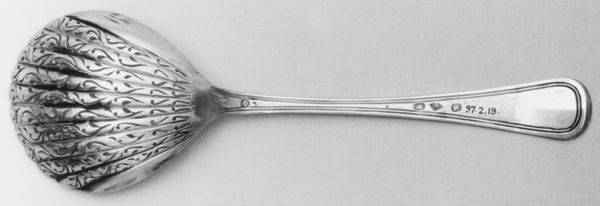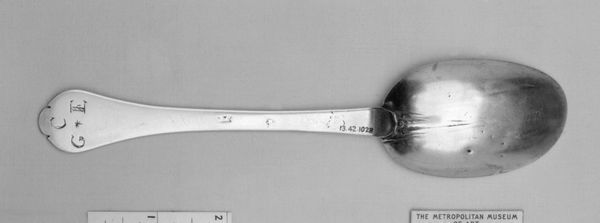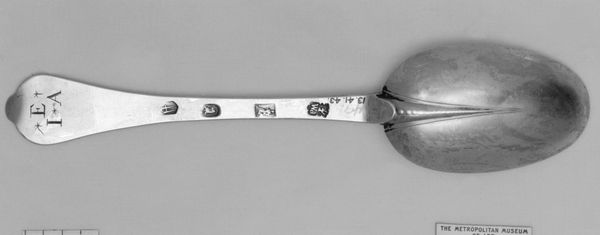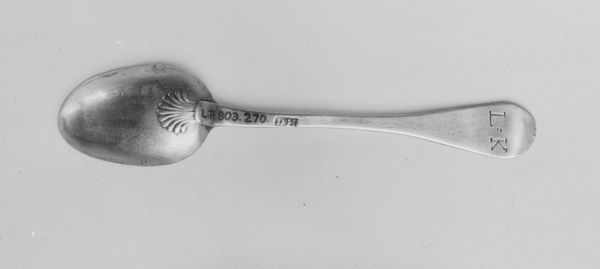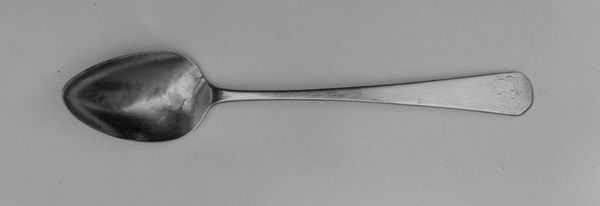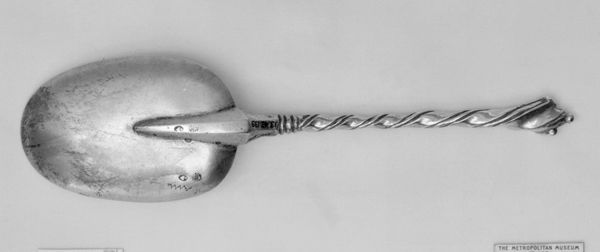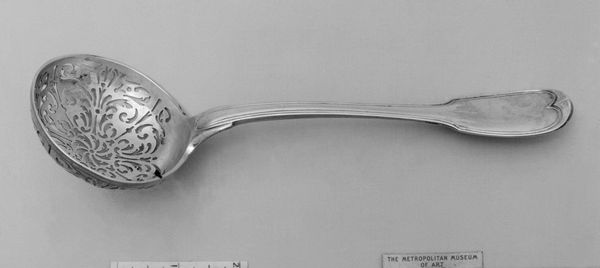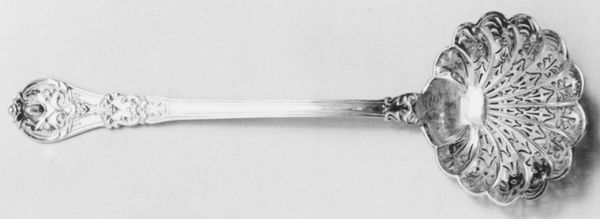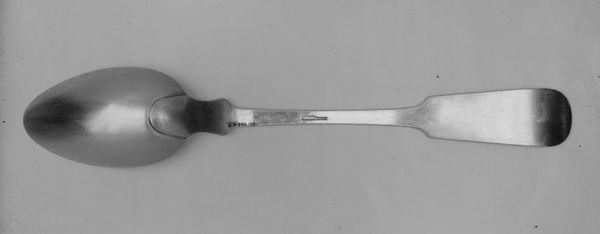
silver, metal, sculpture
#
silver
#
baroque
#
metal
#
sculpture
#
decorative-art
Dimensions: Length: 7 7/8 in. (20 cm)
Copyright: Public Domain
Editor: This is a silver spoon crafted by George Cox, dating back to the early 1700s. I'm immediately drawn to the smooth, reflective surface of the metal and how that simplicity juxtaposes with its clear functionality. What strikes you when you look at it? Curator: I'm interested in the inherent properties of the piece. Note how the material itself, silver, dictates much of the aesthetic. Its malleability allows for the curvature of the bowl, for the tapering of the handle. Editor: The shape is so elegant, but I wonder about the engravings. Curator: The engravings introduce a semiotic element. "B over A M" disrupts the otherwise simple line of the handle, and the marks along the handle are themselves like signifiers of provenance. But what of their placement and relative scale? The marks' functionality as signatures, perhaps, underscores its value, almost obscuring its utility. Editor: So, you're saying that even a functional object can become art through its visual elements? Curator: Precisely. It's a game between the artistic aspiration for grace, evident in its overall composition and its intended utilitarian role. Think about the Baroque aesthetic generally— an elevation of functional objects to ornament. The question is, does it succeed solely as function or solely as beauty? Editor: I see your point about the Baroque style elevating even the most humble items, and now the spoon feels more meaningful. Curator: This spoon offers an insight into how form and function dance around one another. An object designed for use transformed through careful design and material considerations into a visual delight.
Comments
No comments
Be the first to comment and join the conversation on the ultimate creative platform.
